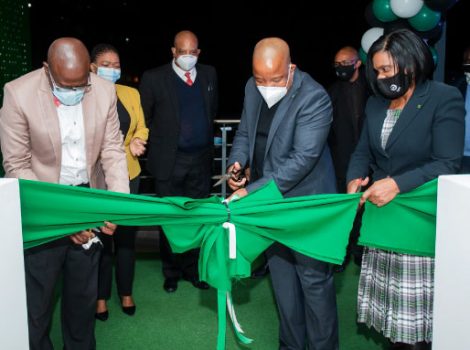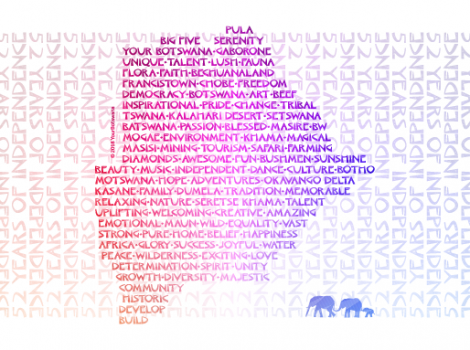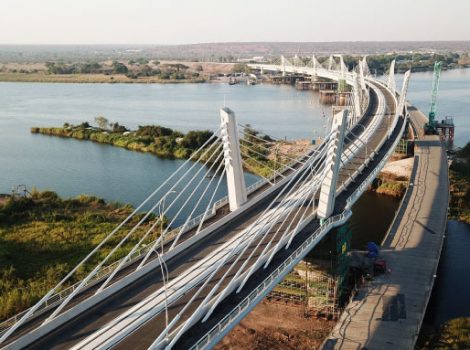The video clip above shows a stretch of the legendary Maun to Francistown highway in the 1960s. The stretch from Nata to Maun was the worst. We travelled this road a few times, and each trip was an adventure in itself. The speed limit was self-regulated because of the road; it was not possible to drive at any speed because of the thick sand, corrugations, potholes, donga’s etc.
At times the wheel tracks were so deep that the bottom of the truck would catch on the middle island strip. There was no requirement for the police to enforce a speed limit on this road, and trying to catch speeding vehicles would have been a waste of time. At the end of the journey, the human body was well-shaken up, and the top of one’s head bruised from constantly bouncing up into the roof of the cab!
I also got into very serious trouble with my father and Mojeremane, my friend and confidant, one trip. My father had gone up to Francistown to collect my eldest sister and other Maun children returning from boarding school for their holidays, and I went along for the trip. This was combined with a collection of supplies for the town, so we were travelling in a 10t Bedford lorry. We were in the soft sands of the Makgadikgadi Salt Pan area on the way back and I was getting bored. I thought it would be fun to have a puncture (I was fascinated by dismantling and assembling things as a little boy).
So, I told Mojeremane it would be nice if we could have a puncture, and with that, there was a loud hiss, and my dream came true. And what a dream! It took the men 12 hours to change the tyre! It all started going wrong after they removed the flat tyre, only to find they couldn’t fit the spare as the sand kept flowing into the track. The spare being fully inflated was larger than the flat tyre that was removed. Anyhow, they decided that they needed some logs to support the truck so they could jack the truck higher – those who know the Salt Pans know that large logs are not in great abundance.
Having found what they could, and it was not enough, they then decided to effectively reverse the situation. Initially, they unloaded the truck as the jack was sinking into the sand(rather than lift the truck, the jack was pushing into the sand), then fitted the spare by deflating it and then pumping the tire up using a hand pump. Once the spare was on, they got the pump out, only to realise that it was a light-duty pump only suitable for car tyres, but not the heavy-duty pump they really needed.
Anyhow, the men all stripped off to the waist and took it in turns to inflate the tyre. They then had to reload the truck, including 44-gallon drums of diesel and sacks of millie-meal by hand so we could continue our journey. Replacing the flat tyre was finished at about midnight, when some approaching truck lights were spotted; it was one of the regular transport trucks, and after a bit of banter, they offered us their heavy-duty pump!
Needless to say, I was not very popular for my intervention, and much to my chagrin, Mojeremane was heard wondering aloud whether I was the son of tokolosh, or tokolosh himself. I was well chastised at this, more so than the telling off I got from my father. He was angry with me for days afterwards and never forgave me!
We were very safety conscious in those days, and wouldn’t leave to travel that road without contacting someone at the other end so if we didn’t arrive within 24 hours, someone would drive up from the other end to find us.
Written by Ian Brooks
Ian is Donald Brooks’ son. His father arrived in Maun in early 1962, leaving four years later in 1966. He was a police officer, trained in the UK, but working in the Colonial Service. His brief on being transferred to Maun was to sort out the ‘w’ element; there was a perception that there was insufficient regulation, particularly the hunting of the wild animals, and his task was to bring this under control.
Ian and his siblings were children while in Bechuanaland Protectorate/ Botswana; the younger 3 children were born in Bechuanaland Protectorate. The context is a combination of his own memory of life in Maun as a child, as well as various conversations with his parents over the years about the photographs and life in Botswana while they were there (1958 to 1968).




To call it a highway is a misnomer. I moved to Maung in 1962 and left in about 69, as far as I remember. In the latter part of that time I went to boarding school in what was then Rhodesia. This meant travelling to and from Francistown three times a year. There were worse roads than that going out towards Lake Ngami or the Chobe from Maung.
always great reading about Maun history , i love it. Please do share more pics if you could. I would love to see how it was back then!!..
A good read albeit too short!